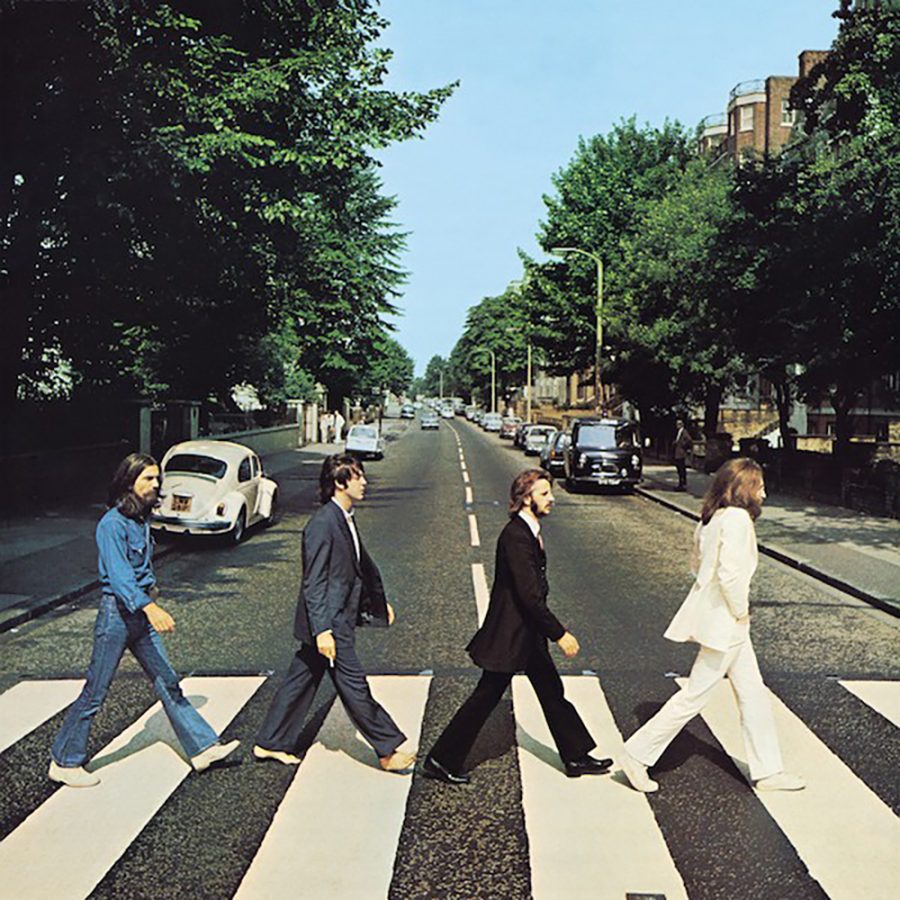Abbey Road debuted on this day in 1969: how has it continued to impact musicians and pop culture?
50 years later, The Beatles’ album, Abbey Road, remains a pop culture icon to all generations, including professors and students at the University of Iowa.
The cover of The Beatles' "Abbey Road" album.
September 25, 2019
The Beatles produced several albums during their rock n’ roll reign of the 1960s, but one album continues to heavily influence pop culture 50 years after its release: Abbey Road.
Abbey Road was released Sept. 26 in the United Kingdom in 1969. (Oct. 1 for the U.S.) Even if they’re not a Beatles fan, most people can recognize Abbey Road’s iconic album cover, which consists of the fab four walking across the street where they recorded some of their album in London.
Several shows and other forms of entertainment have imitated the Abbey Road album cover, including The Simpsons and Doctor Who, said University of Iowa music lecturer Sarah Suhadolnik, who teaches the World of The Beatles course.
“It’s become a common part of pop culture vocabulary,” Suhadolnik said. “It’s now actually a common starting point for people with The Beatles but for the true or living fans of The Beatles, it was the end.”
There are two breakup albums for The Beatles, with one being Abbey Road and the other being Let It Be, according to Suhadolnik. Their process of recording the last two records was convoluted, because the four originally started recording Let It Be, then recorded Abbey Road, and finally finished Let It Be. However, many fans see Abbey Road as the final goodbye from The Beatles, as the band announced their break up one month before Let It Be was released.
“Most of my students, when they pick their album for their album review project, pick Abbey Road,” she said. “Not necessarily because they know its full story at the start, but they know the cover and know some of the songs on it.”
Several songs from Abbey Road are popular not only for older generations, but they resonate with younger generations as well. “Here Comes the Sun” and “Come Together” are just a couple that are just as popular today as they were then.
“A lot of their other songs are symbolic, you have to pay close attention to them while listening,” said UI junior Seton Warren, who took the course, “World of The Beatles” in the fall of 2017. “But these songs can be taken at surface level, a casual listener can enjoy it.”
At the time the record was made, The Beatles were arguing more than ever, enough so Lily DeTaeye — a former UI student who took “World of The Beatles” — could hear the tension in the music.
“There was a lot of conflict at the time it was made,” DeTaeye said. “There were many highs and many lows in the album, and yet, it was still so cohesive. I think that’s why so many people love this album, whether or not they are consciously aware of it.”
Side A of the record includes those popular songs, while Side B holds the medley, which consists of a mix of short songs that the group did not finish, such as “Her Majesty,” “Carry that Weight,” and “She Came in Through the Bathroom Window.”
“I think the medley at the end was super impactful,” Warren said. “They were really feuding at the time. They turned all those bits and pieces of songs they couldn’t finish and made it into one cohesive piece.”
While the group collaborated on the medley, Suhadolnik says that Paul McCartney and their producer, George Martin, were the core architects of the medley. Abbey Road is considered to be less of a political album than its predecessors; it is often seen as a reflective album by fans.
Of course, The Beatles’ songs have been covered by many bands, and who knows how many covers of “Yesterday” have been produced. Over half a century later, they remain one of the most influential bands in the world.
“Their music definitely still inspires artists to this day in a very real, concrete way,” Suhadolnik said. “But I would say, increasingly, in part of how music continues to change, it’s less about people imitating their songs and styles, and more about people chasing the same kind of impact.”



